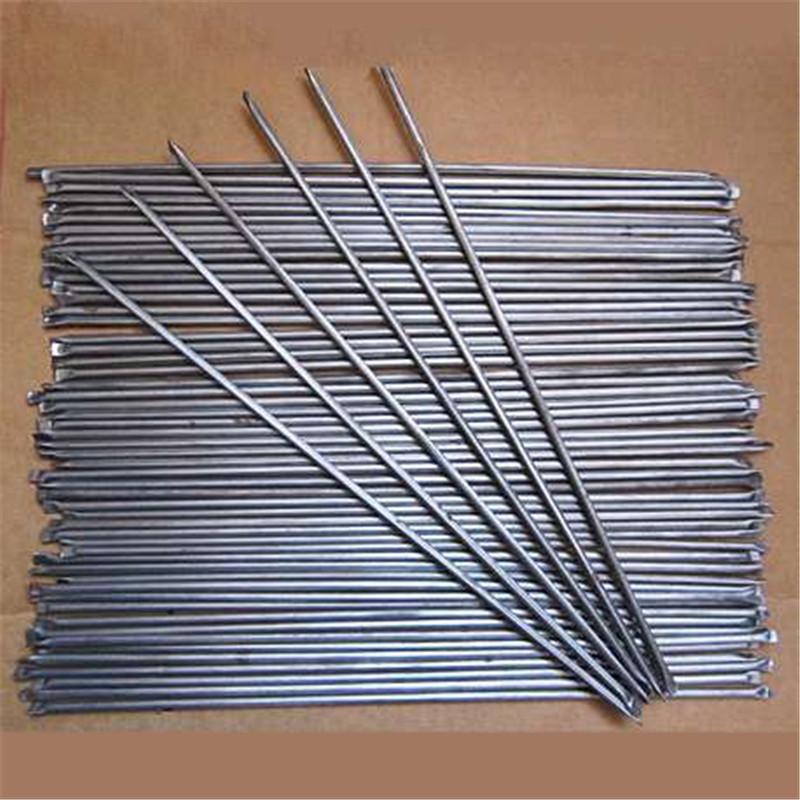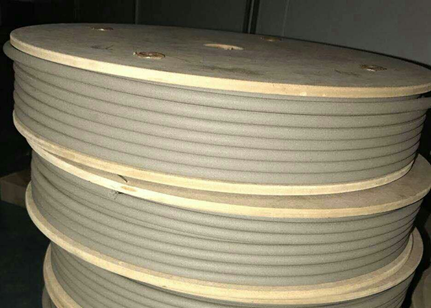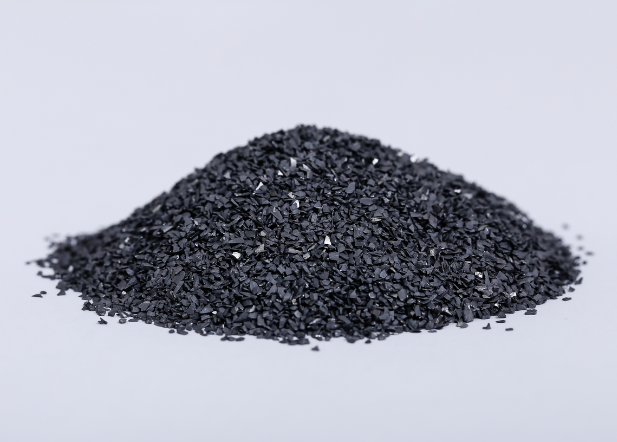Friend who has been chasing (listening to) YYP car reviews should often hear my evaluation change. The vocabulary used is usually "communicative," "virtual," "reward," "non-inductive," and the like. Two days ago, I approved a car's steering in Weibo, and concluded that because of the reasons for steering is not recommended. Someone just said that I was "hyperstatic" and the car was a tool. How many people would like me to be nitpicking about steering feelings? It must be admitted that my driving requirements for steering are very high, certainly higher than the average number of cars. Because I think that steering is the channel of communication between people and cars all the time. As long as the car is moving, no matter whether it is a straight line or a turn, you only need to put your hand on the steering wheel, and you will use the steering system to communicate with the car. Compared to engines, gearboxes and even chassis suspensions, you spend more time with steering and are almost "always on." Therefore, an excellent steering system can significantly enhance the sense of satisfaction and pleasure that a car gives me; a "nauseous" steering system will make me disappointed and disappointed with a car. Everyone will ask, what is your good and bad steering feeling? This question really wants to be written thoroughly. It is estimated that a book can't be finished. I try to describe in the simplest way: Good steering feeling should be precise, obedient, vivid and confident; bad steering feeling is dull. , stickiness, nothingness, dullness, no confidence. There are many factors that can affect the steering feel, such as the form of steering assistance, the mechanical design of the steering system, and the specifications of the tires. Among them, the form of steering assistance is the most influential point in recent years, because in recent years, the steering assistance of the automobile has undergone a great change once in several decades - hydraulic assistance is being replaced by electric power, and most of the electric power steering The feel is significantly worse than the previous hydraulic system. Of course, this is not absolute, there are a small number of electric power can also do a good steering feel (such as 86/BRZ and Mazda), but in general, the new car used in the past few years with electric power, steering feel compared to the old For a generation that uses hydraulic power, the texture of the overall steering is indeed a significant step backwards. [Left for hydraulic assistance, right for electric assistance. The latter is not only simpler in structure, more fuel efficient, but also more scalable. 】 This is a change in driving experience brought about by technological changes in the industry. There are many such examples, such as the popularity of electronic throttles over the years, and the sensitivity of throttle response has generally declined. For example, after the engine is turbocharged, the linearity of power and sound is not as good as the previous natural inspiration. There are various driving factors for the replacement of old technology by new technologies. We cannot stop it, but we cannot believe that new ones are better than old ones, especially when it comes to subjective experience rather than objective data. We should have a certain level of awareness and persistence in the good subjective experience that cars have. Turning to the touch is one of the biggest complaints I have about the new generation of cars. Some people may say that your YYP personally pays special attention to the steering feeling. How many ordinary people will care about this thing? Is it necessary to emphasize it? Yes, if you think that a car is just a commuter tool with four wheels that can run on it, you don't have to worry about it. Then you should not be the audience of YYP ... and I think it is necessary to pay attention to the steering feeling because the steering feeling is not only related to the driving subjective experience, but also involves the active safety of a car and you get along with it. The will to even its value. Here are some examples. Let's talk about performance cars first. The differences between Golf 7's GTI and Golf R are on the surface the latter's greater power and four-wheel drive. But after I opened it, I found a more intrinsic difference: GTI's turn is more false, and it does not give me clear direction and confidence when approaching the limit. And when Golf R crossed the corner, from the chassis to the steering, I could clearly see where the car was going, and the four wheels reached the limit. I am sure that the steering system and chassis settings of these two vehicles are different. Golf R's sense of steering communication is stronger than that of GTI. Based on this (not because of horsepower data), I firmly believe that Golf R is a competent performance vehicle. The same is the Volkswagen Group, and the new generation of Audi TT is the most disappointing to me. As I travelled in a straight line, I discovered that when the steering wheel slightly deviated from the midpoint, the body did not accurately follow the steering wheel angle to change direction. Even a straight line can't provide a precise feeling, not to mention the curve, and a few turns confirm this prediction: the new TT's steering couldn't give me a clear trajectory judgment when it comes to sharp cornering. This is a fatal flaw in a sports car - unless you think that the sports car does not require severe cornering. (The new TT has a lower sporty sitting position and more stimulating power than the 86/BRZ. This kind of steering is really disappointing.) Even if it is relatively less extreme sports car, steering feel can still significantly affect the driving experience. Lexus IS200t, this car chassis center of gravity is very low, but also the rear drive, cornering, "down the plate" is very strong kung fu and fun, through the chassis to the driver's sense of the road, body dynamics is very active and clear. Unfortunately, its steering wheel, although easy to open and easy to open daily, but when the fierce attack on the corner somewhat behind the chassis, often the chassis gives you a lot of information, the feeling of both hands is too weak. For this car, I will describe it as "a bad turnaround, a chassis rescue." Xinsi Platinum Rui positioning than the IS200t is not more exercise, but compared to the Accord it still wants to play a little sports card, and the power system is actually very promising, 2.4L engine high turn enough power, dual clutch manual speed mode super fast, Dynamic follow-up when attacking a bend. Low-flat tires also provide relatively direct chassis communication. Unfortunately, it's steering is almost "zero sense". It is accurate, but it does not give any feedback. It will only execute and cannot communicate. This kind of turn will allow you to drive fast, but soon you will feel that only your one-way input, without any feedback from it, will make you lose your interest in this boring performance. Doesn’t it matter if you don’t care about “sports� Nor is it. The “buying cart†that has driven me the most steering opinions in the near future is Suzuki Feng’s (yes, I bombarded Weibo a few days ago), which is a small SUV. For this kind of vehicle, it is acceptable to turn over the virtual position, and to some extent, it can also increase driving comfort. However, Feng’s steering is the kind of viscous virtual position. There is no change in the steering wheel’s deviation from the midpoint of 30 degrees. Not only does the body not move, but the steering wheel does not return any force. In other words, you clearly turn the steering wheel. There was no response. The worst thing is that even if the speed is increased to 80km/h, the steering wheel is still the same kind of morality that is still unresponsive. This is very maddening: This kind of steering, although it will not affect your normal control of a car, you can still turn, turn and change lanes; but over time, the general direction of the game will make you The response to control of a car loses its predictive sense. Your "car feeling" will become weaker and weaker, and in the long run you will certainly not be a good driver. So I will say that even for the novice, I would not recommend buying this kind of steering characteristics of the car. Cars and luxury cars also need to turn to feel. It is related to the confidence you control. Although this confidence is not necessary, if a car can give you confidence by turning the moment, it is very rare, and it will bring extra fun of. Such as the Lincoln MKX and the Audi new Q7, the size of the two vehicles is quite similar. The Lincoln MKX inherited the excellent communication feeling of the Ford chassis (it is a platform with sharp circles). The sharp transition from the chassis to the steering can give me clear communication. I know what state the car is, a few minutes from the limit, and I'm excited about it occasionally; while the Audi Q7 is very advanced and the cornering limit of the chassis is very high, I can't get the wheel through the steering wheel during the bend. How much pressure is being put on, so it is not too close to the limit, only to hear the tire screaming "hands", carefully walk in not knowing how much the limit is still within. Here, we can sum up several factors that directly affect steering feelings: virtual position, back-to-center force, and road feel transmission. However, there are no absolute standards for these points - for example, the virtual position is not as small as possible, nor is it necessarily a bad one. I recently compared both Overspeed and Magotan in the same game. Magotan's steering position is even smaller, but I feel that even at high speeds and in daily turns, the slightly faster speeding can give me more clear direction and confidence. Because the virtual space is not only a matter of size, but there is also a difference in linearity. A good steering virtual space is not completely empty, but there is still a change in the ratio... For example, back to the force. There is no turning back to the force, such as the above-mentioned headline; but the back-to-middle force is too unnatural and even more tiring to open up, such as the modern generation of the Beijing generation of Lang and Dong. The best back-to-middle force is a sense of presence but also harmonious and natural. This is what the Subaru Department and many Toyotas have. As for the sense of road transmission, this is a higher level of pursuit, and it is indeed a luxury for civilian shopping carts. Because of a set of changes, if the sense of passing roads is to be listed as a design goal, its mechanical structure and layout will add a lot of complexity, and it will inevitably involve some "excess" costs. Many people think that electric power steering can't create a good sense of road. This is not correct. As long as we work hard on suspension mechanics design, sub-frames, steering columns and other components, we will fine-tune the software program of electric power steering to enrich the reality. The steering sense is achievable. The best example is 86/BRZ. The first generation of BMW Z4 as the world's first batch of electric power steering has also achieved this. The combination of virtual points, back-to-center forces, and road feelings can be combined to create a fascinating sense of direction. Unfortunately, such vehicles are becoming rarer and rarer. Who is the best turning hand in YYP's mind? In addition to BRZ/86, Ferrari 458, there is actually a car I never forget - the generation before the production Saab 9-3. Its steering position is not too small, but the front wheel can make a fine response when turning the steering wheel slightly. As a high-powered front drive, the steering wheel can give people an extremely rich variety of information, including pavement, during steering, acceleration and deceleration. The size of the changes and the power output... Unfortunately, Saab is no longer there, and that kind of beauty can only stay in memory.
1.Welding materials
In
Welding, substances called filler materials or consumables are used. As the
name implies, these substances provide filler or a body of molten materials
that provides a strong bond to be formed between the base metals used. Most
welding processes will also require some form of shielding to protect both the
main components and filler from being oxidized during the process.
The
type of welding materials used during welding depends on the nature of the job
intended. Electrodes draw the necessary energy in order to perform welding
applications. Luoyang Golden Egret Company has any kind of welding materials
include CTC Welding Rod /rope, SCTC welding rod/rope, TC electronic welding rod,
Ni-based welding rod, flux-cored Welding Wires, solid welding wires and etc.
Welding
can be applied in different kinds of industries such as building and
construction, oil and gas, marine, power generation, steel, mine tools,
automobile, transportation and etc.
2. Welding rod
1)Cast tungsten carbide based tubular
rod
The
hard phase of the rod is cast tungsten carbide which leads to higher hardness
and better wear-resistance.
Wear
resistance: the wear resistance is 6-7 times better than others. Tested by ASTM
G65
Mainly
used for Mining machinery, Geological tools, Petroleum drilling tools etc, by
Oxy-Acetylene with weak carburizing flame.
Product
recommendation:
GT1103
(CTC, 60-80 mesh),
GT1103-1(CTC, 20-30 um),
GT1103-2(CTC,
40-60 um)
2)The hard phase of tube rod is carbide
pellets which leads to higher impact resistance and better wear resistance than
CTC cloase rod.
Wear
resistance: the wear resistance is 6-7 times better than others. Tested by ASTM
G65 wear test.
Mainly
used for mining machinery. Geological tools etc; by Oxy-acetylene with weak
carburizing flame.
Product recommendation:
GT2102 (Cemented carbide grit, 30-60mesh)
GT2102-2(Cemented carbide grit, 30-40mesh)
GT2102-3(Cemented carbide grit, 40-60mesh)
3)Tube rod is composited by Cemented carbide
pellets, Spherical CTC and CTC. The layer has higher impact resistance, better
wear resistance and good fluidity than other rods.
Wear resistance: the wear resistance is 6-7
times better than others. Tested by ASTM G65.
Mainly used for oil method drill bits, such as
Tri-cone bit, Steel tooth bit, PDC bit, etc. By Oxy-Acetylene with weak
carburizing flame.
Product recommendation:
GT3302 (carbide pellets, 20-40mesh)
GT3302-1(carbide pellets, 14-40um)
4)The hard phase of the rod is monocrystal WC,
the welding layer has a higher wear resistance and better impact resistance.
The wear resistance is 6-7 times better than
others, tested by ASTM G65 method.
Mainly used for the repair and strength for oil
drills bits, such as PDC bit diameter holding by Oxy-Acetylene with weak
carburizing flame.
Product recommendation:
GT4104 (Monocrystal WC, 80-200mesh)
3. Welding Rope
Made
form mixture of CTC and self-fluxing nickel alloy covering on nickel wire. The
CTC is in spherical or irregular with good wear resistance; the nickel alloy is
in spherical or nearly spherical shape with good wettability and erosion
resistance and better corrosion resistance than tubular rod.
Recommend
to use Petroleum drilling tools, Concrete mixing blade, Mud pump, Coal sluice,
Coal drill pipe, Tunnel drilling machinery etc.
By
Oxy-Acetylene Welding with weak carburizing flame.
Product
recommendation:
GS110450N
(CTC, 4mm, HRC 47-55)
GS110550N
(CTC, 5mm, HRC 47-55)
GS110650N
(CTC, 6mm, HRC 47-55)
4. Welding Bar
The
rod is sintered by CTC and Ni-based powders. The CTC(Cast Tungsten Carbide) is
in irregular or spherical shape with better wear resistance and the nickel
alloy is in spherical or nearly spherical shape and has good wettability with cast
tungsten carbide. The cladding layer has a higher impact resistance and better
wear resistance.
Its
wear resistance and corrosion resistance is between tube rod and flexible rope.
Mainly
used on the Steel PDC bit, Concrete mixer blade, Mud pump, Miner chute, Miner
drill stem and Mechanical parts of Tunnel rock drill machine etc.
Welded
by Oxy-Acetylene with weak carburizing flame.
Product
recommendation:
GD4025253-3(CTC, SCTC, 4*600/6*600)
GD4030303-3(CTC,
SCTC, 4*600/6*600)
5. Welding wire
Intensified molybdenum titanium vanadium
composite chromium carbide welding wire can improve layer`s bonding strength
and tenacity. This wire can use for multilayer welding which has no peel off,
and it can maintain good wear resistance under certain impact working condition.
Product recommendation:GSQD671Mo-4(1.6mm)
Medium carbon and high chromium wear resistance welding wire has a higher
hardness, stronger wear resistance, and excellent toughness by adding a certain
amount of molybdenum alloys and boride. It has a better impact resistance and
strip resistance than high chromium cast iron type materials
Product recommendation: GSQD621Mo-4(1.6mm)
With
high sphericity & excellent alloy organization, cemented carbide pellet is
mainly used in welding, as an adding material of PTA Powder , tubular welding
rod, to improve the wear resistance of the workpieces greatly.
Product recommendation: GQ06
Cemented
carbide grit with different percent of cobalt has good abrasive resistance and
is widely used for making grinding, polishing and cutting tools.
Product
recommendation: GS08A
Weld Materials,Tubular Welding Rod,Welding Electrodes,Stainless Steel Welding Rod Luoyang Golden Egret Geotools Co., Ltd , https://www.hvofpowders.com



